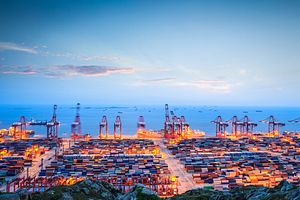There is an interesting phenomenon regarding how the world views China. One day we see China as an enormous global factory, recognizing its global interconnectedness, and the next we view China’s domestic problems, such as the recent terrorist attack in Kunming and tensions in Xinjiang and Tibet, as purely domestic conflicts between one group and another—distinctly separate from the rest of the world. Blaming the ruling party for everything is easy. However, the impact of globalization on China is frequently overlooked, even though it is often more powerful than the force of the Party to some extent. It is true that China has been the greatest beneficiary of globalization, which brought unprecedented wealth and power. However, many people also overlook the high price China paid with its society, environment, and morality for its development.
Globalization divided China into two unequal parts: the successful, aligned and satisfied people on the top, versus the poor, frustrated and marginalized on the bottom. The large-scale outbreaks of social tensions in recent years, including the tensions in Xinjiang and Tibet, should not just be seen as isolated cultural or political battles, but rather should be heard as both the battle cry of China’s new class struggle and as a conflict of globalization. Based on the recent public opinion surveys, Chinese citizens have frequently ranked corruption, pollution, and social tension as their top concerns. In fact, all these issues are directly related to the factors of globalization that have helped China rise. The opportunities brought by globalization have hidden costs.
China’s embrace of globalization has aligned once fractious elites behind a banner of shared economic interest. China’s globalization dividends, including its trade surplus and the world’s highest reserves of foreign currency, have provided the government with huge resources to buy the loyalty of the intellectual and economic elites. Scholars, entrepreneurs, and government officials, who just 25 years prior stood divided in Tiananmen Square, have now found themselves as allies. They have become the stakeholders and co-owners of the new China Inc. People on the top are content, sharing the dividends of their prosperity while harmoniously singing the praises of globalization and the stability of one party rule.
There is reason to celebrate; as China embraced globalization millions of jobs have been created. Wealth among all people in China has increased. Compared with where they were just 20 years ago, even the common people on the bottom have seen their standard of living vastly improve. However, a new problem has emerged: while people on the bottom are better off than in the past, the gap between the rich and the poor, those living in the coastal areas and in the inner provinces (where most minorities live), has grown exponentially. During the prolonged period of economic and social development, everyone’s expectations became heightened. These expectations evolved into frustration when some groups began to rise faster than other groups. Social unrest can be caused by this frustration over growing relative deprivation. The situation is getting even more complicated when some minorities feel the new China Inc. is benefiting the majority Chinese Han and depriving them. The frustration with globalization is behind spreading social tension.
By hitching its fate to the opportunities brought by globalization, China has risen at a roaring speed. However, the real danger for the regime is that it has now become reliant on the speed of economic development. Only if China can maintain its unbridled growth rate can it continue to meet the masses’ expectations regarding employment and a standard of living. Beijing used to call an eight percent GDP growth rate as a “red line” of life or death. During the recent National People’s Congress session, Premier Li Keqiang tried to persuade the delegates to agree to lower the rate to around 7.5 percent. To some extent, Chinese society is now like the bus in the Hollywood movie Speed that must keep moving at a speed of 50 miles per hour; to fall below this speed will explode the bomb sitting just beneath the bus. Beijing is indeed playing a dangerous game.
Globalization has also tied Western leaders to the top of the bus, because a failed China would be catastrophic for the world’s economy. However, staying above the red line means that the wealth gap and socioeconomic marginalization will continue. Unfortunately, this may also mean that conflict will continue, especially when the marginalized have learned that the world will pay attention when violence is the messenger. Neither China nor the rest of the world can ignore this dilemma and paradox; with every “made in China” product we buy we are contributing to this rise in wealth, and the rise in frustration, social tension and air pollution. They are unfortunately coupled together.
Zheng Wang is the Director of the Center for Peace and Conflict Studies at Seton Hall University and a Global Fellow at the Woodrow Wilson Center. Vance Crowe is the founder of Articulate Ventures, a business-consulting firm headquartered in in St. Louis, Missouri and a former Communications Strategist at The World Bank Group.
































